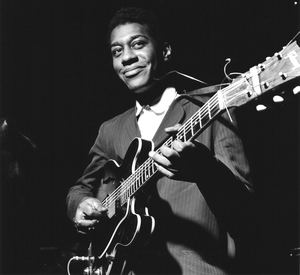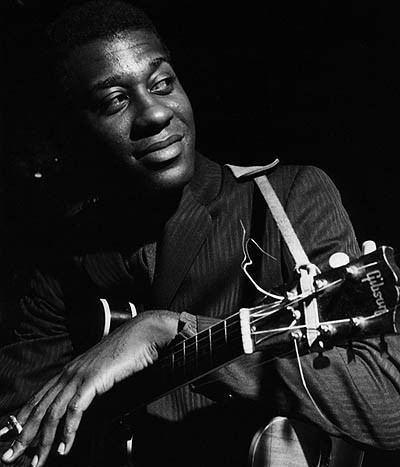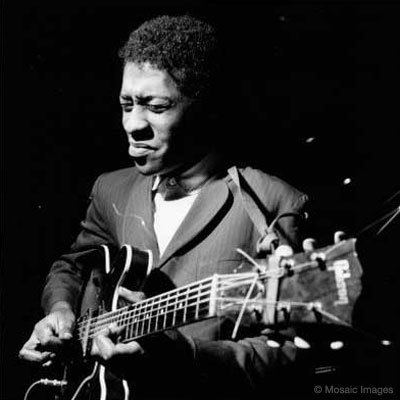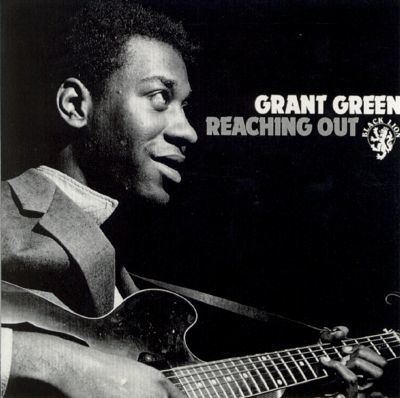Name Grant Green Instruments Guitar Role Guitarist | Years active 1959–1978 | |
 | ||
Born June 6, 1935 ( 1935-06-06 ) Albums Idle Moments, Alive!, Feelin' the Spirit, Green Street, Live at The Lighthouse Profiles | ||
Occupation(s) Musician, songwriter | ||
50 jazz blues licks 23 grant green guitar lesson david hamburger
Grant Green (June 6, 1935 – January 31, 1979) was an American jazz guitarist and composer.
Contents
- 50 jazz blues licks 23 grant green guitar lesson david hamburger
- Grant Green Trio LIVE VIDEO 1969
- Biography
- Equipment
- References

Recording prolifically and mainly for Blue Note Records as both leader and sideman, Green performed in the hard bop, soul jazz, bebop and Latin-tinged idioms throughout his career. Critics Michael Erlewine and Ron Wynn write, "A severely underrated player during his lifetime, Grant Green is one of the great unsung heroes of jazz guitar ... Green's playing is immediately recognizable – perhaps more than any other guitarist." Critic Dave Hunter described his sound as "lithe, loose, slightly bluesy and righteously groovy". He often performed in an organ trio, a small group with an organ and drummer.

Apart from guitarist Charlie Christian, Green's primary influences were saxophonists, particularly Charlie Parker, and his approach was therefore almost exclusively linear rather than chordal. The simplicity and immediacy of Green's playing, which tended to avoid chromaticism, derived from his early work playing rhythm and blues and, although at his best he achieved a synthesis of this style with bop, he was essentially a blues guitarist and returned almost exclusively to this style in his later career.

Grant Green Trio (LIVE VIDEO 1969)
Biography

Green was born in St. Louis, Missouri. He first performed in a professional setting at the age of 13 as a member of a gospel music ensemble. His influences were Charlie Christian, Charlie Parker, Lester Young, and Jimmy Raney, he first played boogie-woogie before moving on to jazz. His first recordings in St. Louis were with tenor saxophonist Jimmy Forrest for the United label. The drummer in the band was Elvin Jones, later the powerhouse behind sax player John Coltrane. Green recorded with Elvin again in the early 1960s. Lou Donaldson discovered him playing in a bar in St. Louis. After touring together with Donaldson, Green arrived in New York around 1959–60.
Lou Donaldson introduced Green to Alfred Lion of Blue Note Records. Lion was so impressed, that, rather than testing Green as a sideman, as was the usual Blue Note practice, Lion arranged for him to record as a group leader first. However, due to a lack of confidence on Green's part the initial recording session was only released in 2001 as First Session.
Despite the shelving of his first session, Green's recording relationship with Blue Note was to last, with a few exceptions, throughout the Sixties. From 1961 to 1965, Green made more appearances on Blue Note LPs, as leader or sideman, than anyone else. Green's first issued album as a leader was Grant's First Stand. This was followed in the same year by Green Street and Grantstand. Grant was named best new star in the Down Beat critics' poll, in 1962. He often provided support to the other important musicians on Blue Note, including saxophonists Hank Mobley, Ike Quebec, Stanley Turrentine and organist Larry Young.
Sunday Mornin' , The Latin Bit and Feelin' the Spirit are all loose concept albums, each taking a musical theme or style: Gospel, Latin and spirituals respectively. Grant always carried off his more commercial dates with artistic success during this period. Idle Moments (1963), featuring Joe Henderson and Bobby Hutcherson, and Solid (1964), are described by professional jazz critics as two of Green's best recordings.
Many of Grant Green's recordings were not released during his lifetime. These include McCoy Tyner and Elvin Jones (also part of the Solid group) performing on Matador (also recorded in 1964), and several albums with pianist Sonny Clark. In 1966 Green left Blue Note and recorded for several other labels, including Verve. From 1967 to 1969 Green was, for the most part, inactive due to personal problems and the effects of heroin addiction. In 1969 Green returned with a new funk-influenced band. His recordings from this period include the commercially successful Green is Beautiful and the soundtrack to the film The Final Comedown.
Green left Blue Note again in 1974 and the subsequent recordings he made with other labels divide opinion: some consider Green to have been the 'Father of Acid Jazz' (and his late recordings have been sampled by artists including US3, A Tribe Called Quest and Public Enemy), while others have dismissed them (reissue producer Michael Cuscuna wrote in the sleeve notes for the album Matador: "During the 1970s [Green] made some pretty lame records").
Green spent much of 1978 in the hospital and, against the advice of doctors, went back on the road to earn money. While in New York to play an engagement at George Benson's Breezin' Lounge, he collapsed in his car of a heart attack and died on January 31, 1979. He was buried in Greenwood Cemetery in his hometown of St. Louis, Missouri, and was survived by six children. Since Green's demise, his reputation has grown and many compilations exist, of both his earlier (post-bop/straight ahead and soul jazz) and later (funkier/dancefloor jazz) periods.
Equipment
Green used a Gibson ES-330, then a Gibson L7 with a Gibson McCarty pickguard/pick-up, an Epiphone Emperor (with the same pick-up) and finally had a custom-built D'Aquisto. According to fellow guitarist George Benson, Grant achieved his tone by turning off the bass and treble settings of his amplifier, and maximizing the midrange. This way he could get his signature punchy, biting tone.
